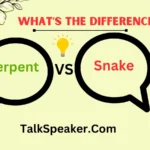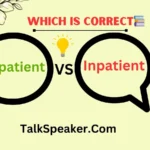Language is a powerful tool that shapes our perceptions and interactions. Choosing the right words can convey more than just meaning; it can express emotional depth and nuance.
In this article, we delve into the distinction between “beloved” and “loved,” two terms often used to express affection but with different connotations.
By exploring their meanings, usage, and impact, we aim to clarify when each term is most appropriate and how they reflect varying degrees of emotional intensity.
Understanding Emotional Depth
Emotional Connotations
Both “beloved” and “loved” denote affection, but they differ in emotional weight. “Loved” is a broad term that describes a strong sense of care or attachment, applicable in various contexts. For instance, you might say, “I loved that movie,” to express enjoyment or fondness. On the other hand, “beloved” suggests a deeper, more cherished level of affection. It’s often reserved for people or things held in high regard and deep emotional significance.
- “Loved”: Indicates affection or liking.
- “Beloved”: Implies a profound, enduring emotional attachment.
Intensity and Depth
The intensity associated with “beloved” often surpasses that of “loved.” While “loved” can apply to a range of relationships—from casual friendships to deep romantic bonds—”beloved” conveys a sense of reverence and enduring devotion. For example, “She is my beloved wife” suggests a profound and long-lasting affection, while “She is loved” could apply to many relationships without specifying depth.
Exploring Intensity
“Beloved” vs. “Loved”
To grasp the intensity difference, consider how these terms are used in various contexts:
- Personal Relationships: When referring to someone with deep emotional significance, such as a long-term partner or cherished family member, “beloved” emphasizes a deeper connection. For example, “My grandmother was my beloved mentor” implies a special, lasting bond.
- Public Figures: Historical figures or celebrities who have made a significant impact on people’s lives are often described as “beloved.” For instance, “Martin Luther King Jr. is a beloved figure in American history” reflects his profound influence and revered status.
Case Studies
- Historical Figures: Mother Teresa is often described as “beloved” for her compassionate work and deep impact on humanity. This usage highlights her revered status and enduring legacy.
- Literary Examples: In literature, characters or themes described as “beloved” often carry a deeper emotional weight. For instance, Toni Morrison’s novel Beloved explores themes of love and memory in a profound, impactful way.
Defining the Unique Intensity of ‘Beloved’
Historical and Cultural Roots
The term “beloved” has roots in Old English and Biblical texts, where it denotes a deep, cherished status. Historically, it was used to express devotion and affection in a more profound sense than “loved.” In many cultures, “beloved” has been associated with figures of great significance or emotional importance.
- Biblical Usage: In the Bible, the term “beloved” is often used to describe God’s profound love for individuals or groups. For example, “This is my beloved Son” signifies a special, deep affection.
- Cultural Significance: In various cultures, “beloved” is used to denote someone cherished and honored, often in contexts of lasting affection.
Emotional Weight
“Beloved” carries a weight that “loved” typically does not. It suggests not just affection but a deep-seated respect and enduring connection. This emotional depth makes “beloved” a term suited for expressions of long-term, significant relationships or entities.
Contextual Usage
When to Use ‘Beloved’
Choosing “beloved” over “loved” is often a matter of context and emotional depth. Here’s when “beloved” is most appropriate:
- Significant Relationships: Use “beloved” for relationships or individuals that hold a special, enduring place in your life. For example, “My beloved pet” conveys a deeper, more cherished bond than simply saying “My pet.”
- Cultural or Historical Figures: When referring to individuals who have had a lasting impact or are held in high regard, “beloved” is suitable. For instance, “The beloved leader” reflects both respect and deep emotional connection.
Subtle Differences
The choice between “beloved” and “loved” can subtly alter the emotional tone of a message. “Beloved” often implies a sense of enduring attachment and reverence, while “loved” is more versatile and can describe a range of affections. Understanding these nuances helps in choosing the term that best conveys your intended meaning.
Expressing Deep Affection Through Language
Language and Emotions
Language shapes our ability to express emotions. The choice between “beloved” and “loved” can influence how our feelings are perceived. Using “beloved” adds a layer of depth and significance to your expression, highlighting a profound, cherished connection.
Examples and Anecdotes
- Personal Narratives: Consider how personal stories reflect the use of “beloved” versus “loved.” A person might refer to a spouse as their “beloved partner,” indicating a deep, enduring bond, whereas a casual acquaintance might simply be described as “loved.”
- Literary Uses: Literature often uses “beloved” to convey deeper emotional themes. For example, in Shakespeare’s works, characters are often described as “beloved” to emphasize their profound impact on others.
The Nuanced Usage of ‘Loved’ in Everyday Language
Everyday Contexts
“Loved” is more commonly used in everyday language due to its versatility. It applies to a broad range of relationships and feelings, from casual to deep. For example:
- Casual Affection: “I loved that movie” indicates enjoyment without implying deep emotional attachment.
- Common Relationships: “He is loved by his friends” conveys general affection without specifying the depth of the connection.
Cultural and Social Implications
In various cultures, “loved” is used to describe a range of affections. Its flexibility makes it suitable for both formal and informal contexts. Understanding its usage helps in communicating affection appropriately across different situations.
‘Beloved’ in Literature and Culture
Literary Significance
“Beloved” often appears in literature to explore themes of deep affection and impact. For example:
- Toni Morrison’s Beloved: The novel examines the profound emotional and historical significance of its characters, reflecting the term’s deep resonance.
- Classical Literature: Works like Shakespeare’s sonnets use “beloved” to emphasize the depth of emotional bonds.
Cultural Impact
“Beloved” has a lasting presence in cultural expressions, from art to music. It often denotes a cherished or revered status, contributing to its rich emotional texture. For instance:
- Art: Paintings and sculptures depicting revered figures might use “beloved” to convey their significance.
- Music: Songs dedicated to loved ones often use “beloved” to highlight deep emotional connections.
Historical References and Modern Examples
Historical Figures
Throughout history, “beloved” has been used to describe figures who have left a lasting legacy:
- Historical Leaders: Figures like Mahatma Gandhi or Nelson Mandela are often described as “beloved” due to their profound impact and revered status.
- Cultural Icons: Celebrities who have touched lives deeply, such as Audrey Hepburn or Freddie Mercury, are frequently described as “beloved.”
Modern Usage
In contemporary contexts, “beloved” continues to be used to describe figures or concepts that hold significant emotional value. For example:
- Media and Public Figures: Public personalities who have made lasting impacts on society are often described as “beloved” in media and public discourse.
Practical Examples
Comparative Examples
To illustrate the difference between “beloved” and “loved,” consider these scenarios:
- “Beloved”: “She is a beloved teacher in her community,” emphasizing the deep respect and affection held for her.
- “Loved”: “He is loved by his students,” indicating general affection without specifying the depth of the connection.
Interactive Element
To help you understand the usage better, here’s a quick exercise:
- Read the following sentences and decide if “beloved” or “loved” is more appropriate:
- “The _____ pet was cherished by the family for years.”
- “The _____ author’s books are enjoyed by readers worldwide.”
- (Answers: Beloved pet; Loved author)
Conclusion
In summary, “beloved” and “loved” are both terms of affection, but they convey different levels of emotional intensity. “Beloved” suggests a profound, enduring connection, while “loved” is more versatile and broadly applicable.
Understanding these nuances allows for more precise and meaningful communication, reflecting the depth of our emotions.
By paying attention to the subtle differences between these terms, you can enhance your expression of affection and ensure that your language accurately conveys the intended emotional depth. Whether referring to cherished relationships or significant figures, choosing the right word makes a difference in how your message is received.
Feel free to experiment with these terms in your writing and conversations to better capture the nuances of your feelings and enhance your communication.

As an experienced English teacher, I’m Jessica Thompson, here to make grammar and vocabulary simple and fun. Join me on TalkSpeaker as we explore the language together, one lesson at a time!



